Kids Easy Project Elephant Toothpaste Without Yeast
If you are looking for a fun, messy science activity that will wow the kids and doesn't cost a lot of money, you need to try the Elephant Toothpaste experiment.
What is elephant toothpaste?
It's a super fun, and inexpensive, science experiment that results in a foamy explosion.
It is similar to the soda pop geyser, but because you only need small amounts of the materials used, you can do the experiment over and over again without breaking the bank.
It's also less sticky, and cleans up quickly and easily if done outside.
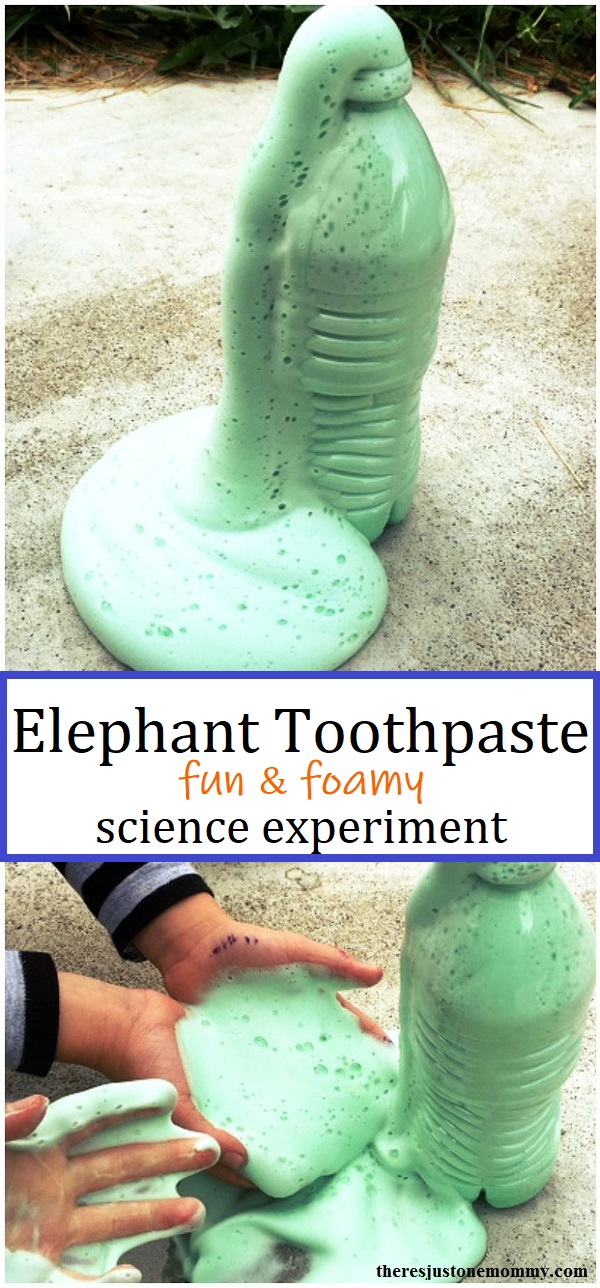
Science experiments like this one can easily be turned into a more well-rounded STEM project.
Math is already involved, since your child will be measuring ingredients. And, of course, the chemical reaction is science.
After trying the experiment with the plastic bottle, you may want to encourage your child to engineer a different container to do the experiment in. Can they create a volcano with Legos? In the fall they can even use a small pumpkin for this twist.
If your child loves STEM, they may also like some of these fun STEM activities for kids.
Elephant Toothpaste Recipe
Affiliate links have been used below. See my full disclosure for more details.
Materials:
- A Clean 16 oz. Plastic Bottle
- Liquid Dish Soap
- 1/2 Cup Hydrogen Peroxide
- 1 Tablespoon Dry Yeast
- 3 Tablespoons Warm Water
- Food Coloring (optional)
- Small Cup
- Funnel
- Spoon
For the ultimate reaction, which can produce foam that shoots 5 or more feet into the air, you need to use what's called 20-volume (or 6%) hydrogen peroxide .This peroxide is stronger than what you find at the grocery store. In the U.S. you can find this at hair salons or online.
We couldn't wait to give it a try, so we used the standard 3% peroxide we had in the medicine cabinet.
Although the reaction wasn't as extreme, we were not disappointed with the results.
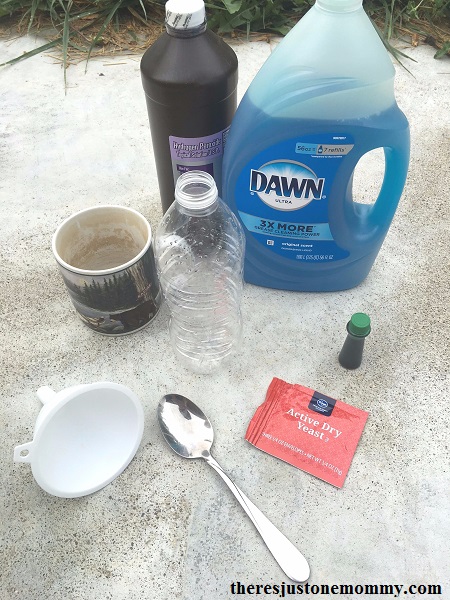
Why Is It Called Elephant Toothpaste?
The chemical reaction in this experiment is often referred to as "elephant toothpaste" because when it foams out of the mouth of the bottle it looks a lot like when you squeeze toothpaste out of a tube.
Some joke that if it were really toothpaste, it would be the amount an elephant would need.
Obviously, since liquid dishsoap is used, it should NOT be ingested.
To make it look even more like toothpaste, you can squirt a few drops of food coloring along the inside walls of your empty bottle before doing the experiment. This causes stripes to appear, similar to what you may see in several major brands of toothpaste.
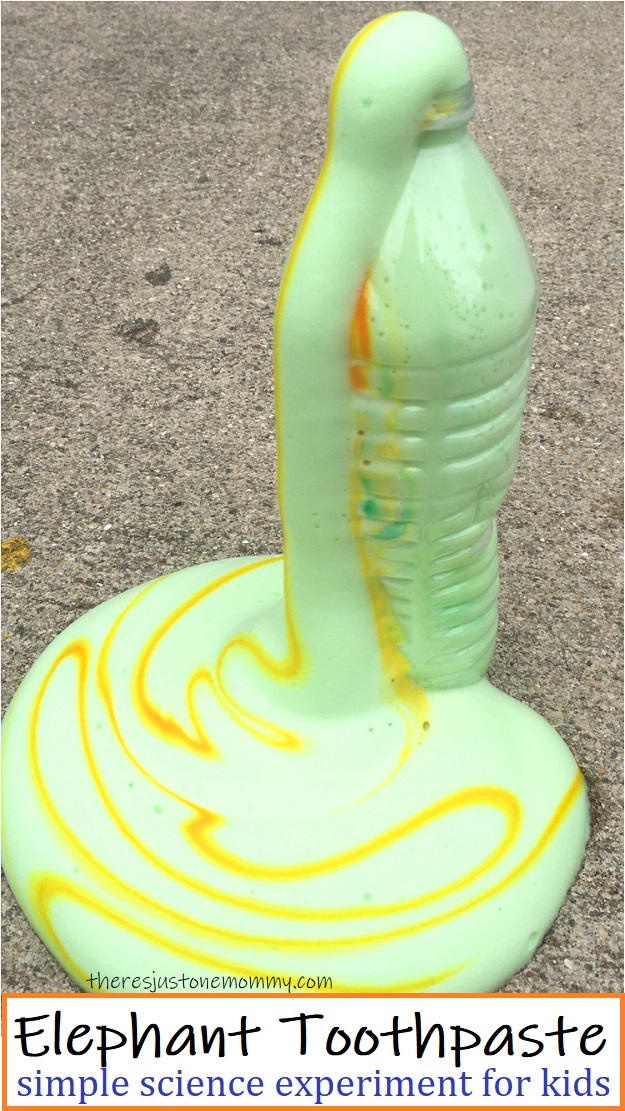
How to Make Elephant Toothpaste
Like I mentioned earlier, this experiment can get messy. It is best done outside, where you can clean up easily with a hose.
Begin by squeezing 4-5 drops of food coloring into your empty plastic bottle. This step is completely optional, but the color does make the reaction even more fun to watch.
Add 1 tablespoon liquid dish soap and swirl the bottle around to mix it with the food coloring.
Add your hydrogen peroxide to the bottle. Swirl it again to make sure it mixes well.
IF you want stripes, you can add a second color of food coloring, this time making sure your drops run down the inside walls of your bottle.
In your small cup combine the warm water and yeast together and stir for 30 seconds, making sure the yeast is dissolved as much as possible.
Use the funnel to quickly pour the yeast mixture into the bottle.
Remove the funnel quickly, as the reaction will start almost immediately.
If you use the 6% hydrogen peroxide it can shoot several feet into the air, so be sure to get out of the way quickly.
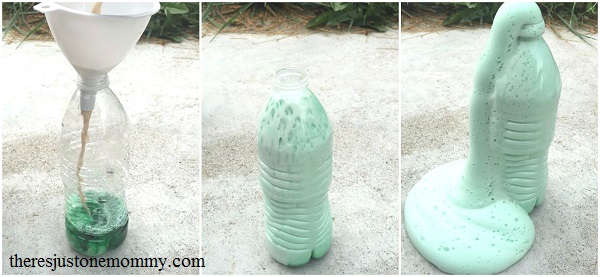
How Does Elephant Toothpaste Work
Yeast contains an enzyme called Catalase. This enzyme breaks down hydrogen peroxid (H2O2) into oxygen gas and water (H2O).
The oxygen gas gets trapped in bubbles made by the dish soap, producing that fantastic foamy solution that erupts out of the bottle.
Once the foamy explosion is finished, you will notice the bottle and foam are warm to the touch. That's because the experiment not only causes a chemical reaction that produces the foam, it also causes an exothermic reaction — meaning it produces heat as well.
If you use the standard 3% hydrogen peroxide, then the foam is safe to touch. (I've heard 6% hydrogen peroxide can cause skin irritation to those with very sensitive skin.)
If your kids are anything like mine, they will find it hard to keep their hands out of it. Mine spent a good 15 minutes playing in the foam afterwards.
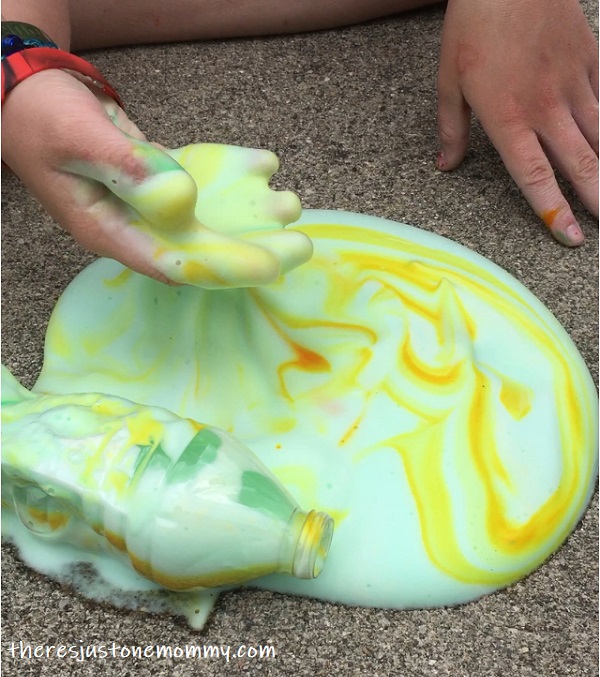
More Fun with Elephant Foam
Try some of the ideas below to take your child's learning even further.
- Does the amount of yeast used change the amount of foam produced? Try using more or less yeast to see what happens.
- What about using more soap? Experiment with different amounts to see what happens.
- Does the reaction still work if you don't mix water with the yeast before adding it to the soap mixture?
If you liked this post, you'll also like:
- Simple Vanishing Ghosts STEM Activity
- Make Scrumptious S'mores with a Solar Oven
- Amazing Rising Water Experiment
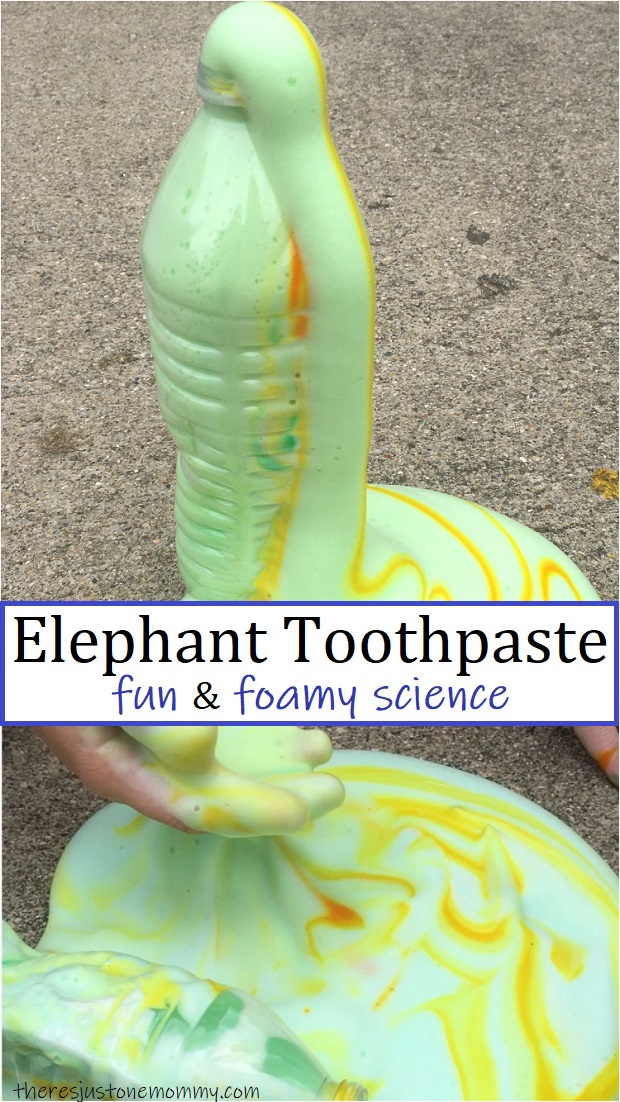
Originally published June 29, 2017.
Source: https://theresjustonemommy.com/elephant-toothpaste-experiment/
0 Response to "Kids Easy Project Elephant Toothpaste Without Yeast"
Post a Comment